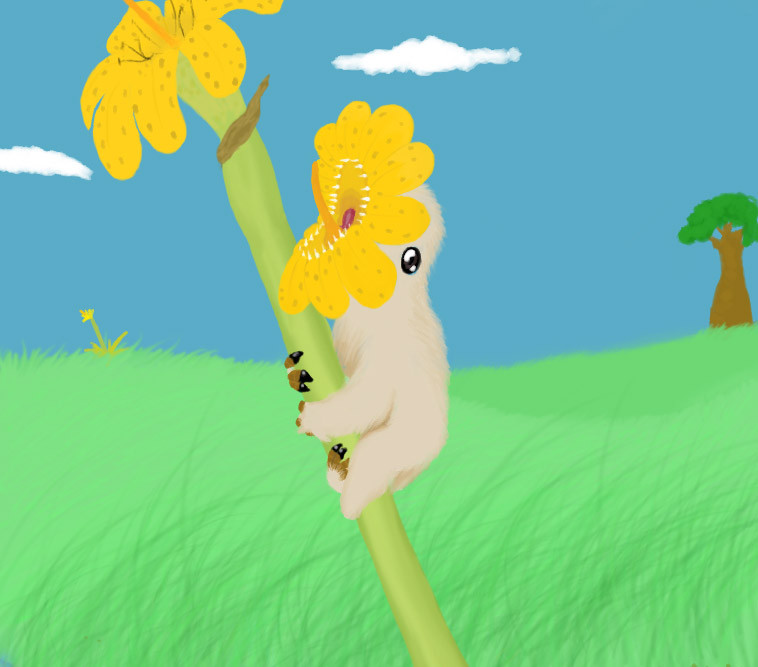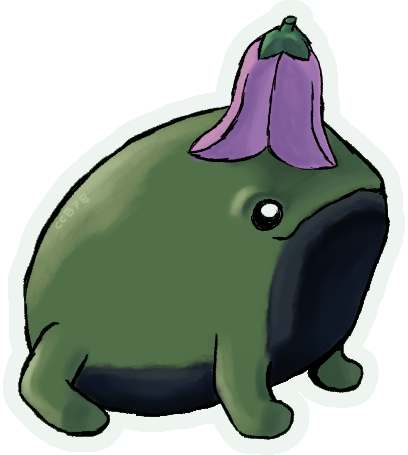HOME | DD
 HybridRex — Flower-Traps
by-nc
HybridRex — Flower-Traps
by-nc

#pterosaur #anurognathidae #speculativeevolution #spec_evo
Published: 2015-08-12 03:15:09 +0000 UTC; Views: 1931; Favourites: 25; Downloads: 13
Redirect to original
Description
On the island continent of India lives a land of wonder, separated for millions of years, a land of beauty and awe. Many lineages extinct outside have survived here, and groups that are found elsewhere are derived into forms endemic only here; from the large predatory Deinobatrachus of the Western Ghats, to the aberrant ‘terror mavials’ (secondarily flightless, bird-esque monotremes), and the large herbivorous spiders. This place also includes the last of the pterosaurs, once dominating the air in the Late Triassic, Jurassic, and the Late Cretaceous: now they’re only found here. Despite this, they have considerable diversity. The most specious forms are the flower-traps.Flower-traps are a group of derived anurognathid that has adapted towards the lifestyle as an ambush predator. They aren't ambush predators to anything large, but instead to small pollinators, for they mimic flowers. To start, they are very small, with some species being debatably the smallest tetrapods. The largest species (Infensoflorous caeruleus, the azurous hate-flower) can have floral mouthparts up to 30 cm wide and can be 18 cm long, while the species Crapuloflorous aureus can have floral mouthparts of 2.5 cm wide and can be 1.5 cm long. Their mouths are wide, and filled with needle-shaped teeth. Around the mouth are colourful, fleshy, petal-like structures and whiskers. Inside the mouth they have an equally colourful, long, and sensitive tongue that mimics the pistil, as well as colourful gums and other tissue in their mouth. Their eyes are large, allowing them to detect danger. The eyes also have another trait that allows them to wait for long periods of time motionless: they have a hardened lense over the eye that protects it from debris and drying out (similar to a snake). The body itself is covered in pycnofibres, which can range from soft to spiny. Colouration for the body can range from browns to near-whites. Their semi-dextrous fingers have large claws that allow them to hang on to the stem of plants. The only remnant of their volant ancestry is their last digit on both their fore and hindlimbs, which now serves little use. All of their flight membranes have disappeared, as well as their pteroid bone.
As said before, they mimic flowers to catch pollinators. However what that flower can be is highly variable and depends with the species, sex, season, and age. In sexually dimorphic species, males and females might resemble different flowers altogether, or females might like more like flower buds while the male looks like flowers in full bloom. The floral mouthparts might change what it mimics per season, or even change which species of flower it mimics annually. Some come in different morphs. Regardless of the camouflage, the method they use to hunt is climbing on to the upper stem of a flowering plant, hanging on, open their mouth and remain motionless. This can last for hours, possibly even days. Once something touches their tongue, their mouth closes quickly and with enough force to crush the prey. Another lure besides the mouthparts are their sweet smelling saliva, which mimics the nectar. The species they catch depends on the size. Smaller species are able to eat insects like flies, beetles, and wasps. Larger species are even able to eat small mavials, other small mammals, birds, lizards, small frogs, and other animals. After eating their fill, flower-traps crawl off the plant, and either move into burrows, holes in trees, leaf litter, or even into the nests of the aforementioned large herbivorous spiders. This is to prevent predators or even herbivores from eating them while they sleep. The predators they face depends also depends on their size. Small flower-traps can be predators of large insects such as katydids, large numbers of wasps, centipedes, and carnivorous beetles (and larvae). Other predators for the small species also include large frogs, larger mavials/birds, and mammals. For larger flower-traps (and smaller ones as well) they face mavials-of-prey, predatory birds, large lizards (including snakes), very large centipedes, goblins (another group of flightless pterosaur), and other larger predators. When a predator (or animal accidently) tries to consume to flower-trap, it will attempt to either intimidate with their mouth open or hiss. If this doesn’t work, they will throw up their meal (if it has just eaten), eject any waste in their system, and leap off the stem and run away. Sometimes they cannibalize on each other, usually when an individual accidentally crawls into another flower-trap’s nest and eats the flaplings/eggs.
Due to the number of species that live in a given area, reproductive periods are short to prevent accidental mixing and competitions between species. What the male and female do in this period depends on the species. Most of these will gather around flowering plants, to which the male will compete with other males. The two most popular methods include two males displaying each other and the winner of the duel gets to reproduce with the female, the other is males will try to impress females and the females ultimately choose who they reproduce with. These selection pressures made the males evolve strange and loud calls, which the species may be named after (“screaming-flower”, “weeping-blossom”, etc). Interestingly, males typically have longer reproductive periods than the females. If this period overlaps with another species’s period in the same area, it can lead to hybrids, which aren’t uncommon. After coitus, the female will move into an area and create a nest out of twigs, saliva, leaves, and other materials. The female will then lay 1 - 6 small eggs. Due to their small size, the eggs take around 11 - 14 days. In this period of time, the mother incubates the eggs, only occasionally leaving to feed. The flaplings are altricial, and require the care of their mother. The time it takes for the young to grow mature enough to leave the nest is about around 1 - 2 months. These flaplings have colourful, sometimes metallic, fleshy growths around the mouth to attract the attention of the mother. This trait is grows into the floral mouthparts of the adult. Once the flaplings leave the nest, their floral mouthparts are developed enough to attract pollinators. At first they’re dull and small, but as they grow it becomes more vibrant. Flower-traps live short lives, at most about 5 years.
All modern pterosaurs (=indodactylia) are derived from anurognathids; small, nightjar-like pterosaurs. The ancestor of all modern pterosaurs seems to have been derived from more terrestrial species that hunted on the ground of arthropods and worms that appeared around 120 million years ago in India and China (Dendrorhynchoides macrocneme). Around the Middle Cretaceous, a lineage called the robustidactylids evolved in India. While still small, their forelimbs were larger and more muscular. The claws were bigger as well. These were adaptations to dig, suggesting that they built burrows of some kind. This may have originated from ‘chasing’ their prey down their holes, to which they tried to dig after them: the foragers became diggers. From this point onwards, this specialization would continue. Their forelimbs became shorter, robust, and positioned more towards the anterior end of the animal. Due to their forelimbs, launching off the ground became increasingly more difficult. Their wings became more and more useless, as they relied more on their burrows for escape from predators. So, by the end of the Cretaceous, the first true flightless forms appeared (Mysaurus & Megabrachion). However, the Chicxulub asteroid impact and the volcanic activity from the smaller Deccan traps led to a massive extinction in India (as well as the world, although it wasn’t even close to the largest extinction). Most of the dinosaurs died out, as well as the giant notosuchians. The world afterwards was different from the one before. Small animals looked at an empty world. In this recovery period that was the Paleocene, life began to replenish and diversify. Some pterosaurs began to leave their burrows again, as there was very little predators and now lots of food. There was a radiation of early surface dwelling pterosaurs. One lineage would stay underground and continue to become even more adapted to life in the ground. Another one would become the goblin-line pterosaurs. The ancestral flower-traps are thought to have evolved from species whose offspring had colourful fleshy folds around the mouth so the mother can see them in the dark places they nest in (it’s thought that altricial flaplings appeared in the ancestral subterrestrial species. Although no fossil evidence is available, since all modern pterosaurs have altricial young it’s speculated that it’s a synapomorphic characteristic). It’s thought that these fleshy mouthparts appeared in some adults, and possibly made the males more attractive (proto flower-traps may of had a similar reproductive ritual as modern species). Through sexual selection, these mouthparts grew in both size and colouration, which may have ended up accidentally attracting some pollinating insects. So with the influence of both sexual and now natural selection; these basal flower-traps would radiate immensely into a variety of forms.
Currently there’s 5000 to 10,000 described species, depending on the classification. Defining what a species is with flower-traps is difficult for many reasons. For one is generally how much variation one species can have. One species alone can have multitudes of colour morphs, as well as being polymorphic with not just colour but shape of the floral mouthparts as well. Many species change their floral mouthparts depending of factors in the environment, the season, and which year. Some species are highly sexually dimorphic, while others have very little differences. Some species that are closely related can only produce sterile offspring, while ones that are from different subfamilies can produce viable hybrids. Another problem is the number of hybrids around, and even species which are just hybrids between two species (to which there’s at least 10 known). All this have made classifying them difficult. To date, there’s 6 families of trap-flowers; deinofloridae (drop-flowers & flare-petals), iratofloridae (hate-flowers & buzzing-blossoms), imperiofloridae (biting-lylies & norchid-mimics), anthignathidae (flower-bats), cacodactylidae (sepal-fingers), and seychellodactylidae. However, many times species from different groups can have similar common names (Deinoflorous erythron is part of deinofloridae, but it’s called the bloody hate-flower). Seychellodactylus inexpectus is the only pterosaur found outside of India (on the island of Seychelles), and the only member of its family.
-----
I have not posted here in a while, to which I apologize. This was for a competition from around 2-1 months ago, and I simply forgot to post it here, so I apologize again. Entry here , with bonus sketches and unfinished painting.
Related content
Comments: 7

Oh my god, I absolutely love everything about this concept!
👍: 0 ⏩: 1

It'll make you think twice about stopping to smell the roses! 
👍: 0 ⏩: 1

I actually wonder a rose-like flower-trap would look like. They probably would have some very peculiar forms, looking at how bizarre flowers can be.
👍: 0 ⏩: 0



























